If you are a first-time parent or have children that are still young, one thing you may want to consider early on is whether paying for their college education is something you want to do for them. If so, you’ll want to make that part of your financial planning strategy, and the earlier you begin to save, the better.
The cost of a college education can be daunting. The average cost for tuition alone for the 2022-2023 school year ranged from $39,723 for private colleges to $10,423 for public, in-state colleges, according to a U.S. News annual survey.
If you are pondering ways to begin saving for your child’s college, here are some options to consider:
529 Plans:
When money is set aside to be used only for eligible educational expenses, a 529 plan is a popular type of education savings account. It gives both federal and some state tax benefits. When you use the funds for educational expenses, all earnings and withdrawals are tax-free.
Pros
- Withdrawals up to $10,000 annually for K-12 tuition and eligible higher education expenses are exempt from federal income and capital gains taxes. Some states also provide extra state tax advantages.
- Depending on the plan you choose, the account’s lifetime maximum investment can reach $500,000, and contributions up to $16,000 per person per year are eligible for the yearly gift tax exclusion.
- Additionally, if you want to defer taxes on a bigger sum, you can treat contributions up to $80,000 made in a single year as if they were contributed over five years.
- With 529 plans, dependent students’ accounts are classified as parent assets for the purposes of financial assistance. For example, when money is withdrawn from a 529 plan, those assets do not need to be disclosed on the FAFSA.
Cons
- If the earnings are not used for approved educational expenses, there is an additional 10% tax to be paid on the earnings.
- The only investment options that are available are those that the plan provides.
For in-depth details on all there is to know when considering the pros and cons of a 529, please see our blog post, “What is a 529 Plan?” by Madison Wallace.
Coverdell ESA:
The Coverdell Education Savings Account and the 529 plan are comparable in that both allow tax-free interest earnings and withdrawals for approved school expenses. However, they are much less useful, being less generous in terms of maximum contributions than other college plans for kids and are not open to all families.
Pros
- Withdrawals from Coverdell Education Savings Accounts (ESAs) can be made tax-free for eligible K-12 and higher education costs (up to $10,000 annually).
- You have access to a wide variety of investing alternatives, including the choice to self-direct your assets.
- Whether owned by a parent or a dependent student, the value of a Coverdell ESA account is considered a parent asset on the FAFSA.
Cons
- The annual maximum investment per beneficiary is $2,000 from all sources combined.
- Before the recipient becomes 18, all contributions must be made, and they can only use the account up until the age of 30.
- Only married couples making under $220,000 or individuals making under $110,000 are eligible to donate.
Custodial Account:
An investment account formed by an adult on behalf of a child is known as a custodial account. There are two types of custody accounts, known as UGMAs and UTMAs (Uniform Gift to Minors Act and Uniform Transfers to Minors Act, respectively). The investments made with the money are varied and include mutual funds, stocks, and bonds. In most states, including Texas, a parent holds these accounts until the child becomes 21 at which point ownership and complete control over the money is passed to the child.
Pros
- So long as the money is used for the minor’s advantage, you can spend the money you have saved in a custodial account on anything, including computers, cars, and plane tickets.
- The amount you can invest is not capped.
- The account’s value is excluded from the donor’s gross estate value.
Cons
- The “kiddie tax” is a tax on earnings and gains that applies to minors. It taxes unearned income exceeding $2,500 for some children up to age 23 at the marginal rate for trusts and estates (as of 2023).
- When the student reaches legal adulthood, they are given ownership of the account and are free to utilize the funds anyway they see fit, which may be different from what the parents had originally intended.
- Custodial accounts are considered student assets on the FAFSA, which might result in a 20% reduction in a student’s aid package.
Roth IRA:
But wait, isn’t a Roth IRA a retirement saving plan? Typically, yes, but its unique tax advantages do allow it to act as a reasonable option to fund education expenses for some people.
Pros
- Contributions made to the account can be withdrawn at any time for any reason.
- The 10% withdrawal penalty on earnings is waived when funds are used on qualified higher education expenses.
- The value of the account(s) is not considered as an asset on the FAFSA form.
Cons
- Roth IRAs are subject to maximum contribution limits annually. In 2023, the maximum contribution is $6,500 per eligible taxpayer ($7,500 for those 50 and over).
- Married couples’ earnings of more than $228,000 or more are ineligible to contribute to Roth IRAs ($153,000 for individuals).
- Other family members are unable to contribute to a Roth IRA.
- It’s meant to be a retirement account. Pulling money from it to pay for non-retirement expenses eliminates those funds plus potentially decades future growth.
Scholarships & Grants:
Scholarships
This is something to consider in more detail once your child is in high school, but becoming knowledgeable about what’s out there and starting your list early is helpful! Full-ride scholarships are awarded from some institutions and organizations based on various qualifications, which will pay all your tuition costs. While larger scholarships are more prestigious and higher in value, there is still great potential with many smaller ones – every bit counts!
Grants
There may be grants available for you to apply for, which would essentially be free money for your education. Since the money can be used to pay for what you owe at the school, you have the chance to reduce the amount you’ll have to pay.
Financial Aid & Student Loans:
Only a tiny percentage of college students never need to borrow any money to pay for their education. Those with full scholarships or from affluent families can avoid borrowing money, but even those with substantial savings must borrow money for at least some of their school costs. One application, the FAFSA, can be used for several federal and state financial aid outlets. Make sure you comprehend how loans function prior to accepting one. The following information can assist you in making wise investments with your student loans.
Pros
- The interest rate on student loans is disbursed at a fixed rate, so it never changes. Compared to sources of private student loans, this is frequently much less. For federal student loans disbursed for the 2017–18 academic year, the interest rate is 4.45%.
- There is no need to check credit. You qualify for federal student loans because you’re continuing your education after high school.
- Students who are eligible for subsidized student loans have the interest on their loans paid while they are still in school by the federal government, which ultimately saves them money.
- When it comes time to repay your student loans, you can choose from a number of repayment options that are tailored to your individual requirements.
Cons
- Subsidized student loans are not available to all students. Your FAFSA’s information affects your eligibility.
- Debt from student loans must be paid back, and it mounts quickly. Visit the National Student Loan Data System to keep track of your student loan debt while you are still in school.
- You can only borrow a certain amount, so make sure you’re also looking for other forms of financial aid.
The cost of college is higher than it has ever been, and it’s crucial to know how you intend to pay for it. Without a prior financial strategy, you’re more likely to borrow more money than you need, and it will end up costing a lot of money in the long run. Even though attending college is expensive, being financially prepared may be the difference between achieving the career you desire and putting your financial future at risk.
The opinions voiced in this material are for general information only and are not intended to provide specific advice or recommendations for any individual. All performance referenced is historical and is no guarantee of future results. All indices are unmanaged and may not be invested into directly.







